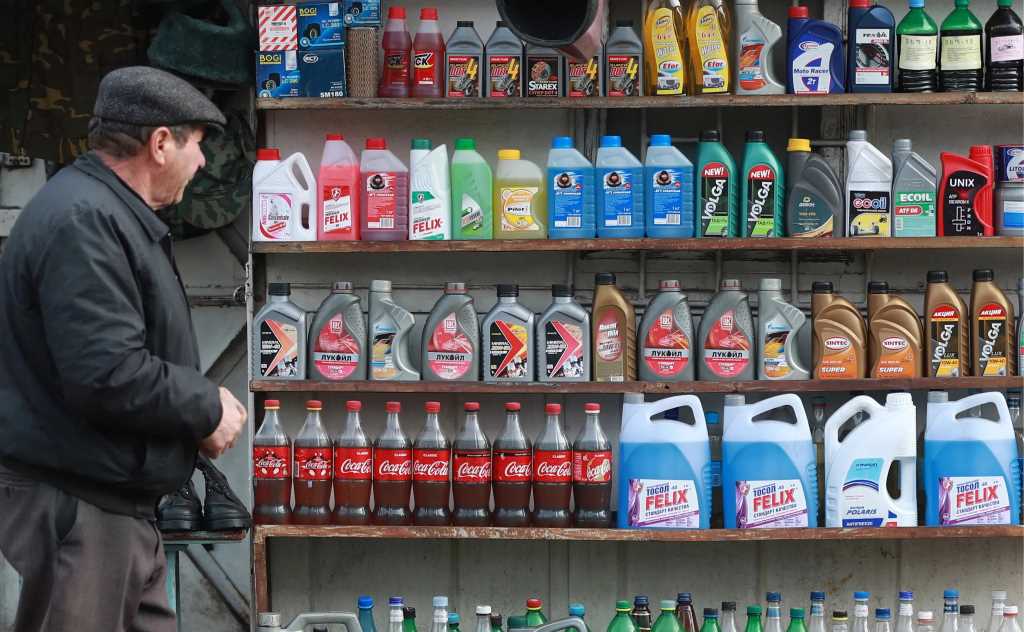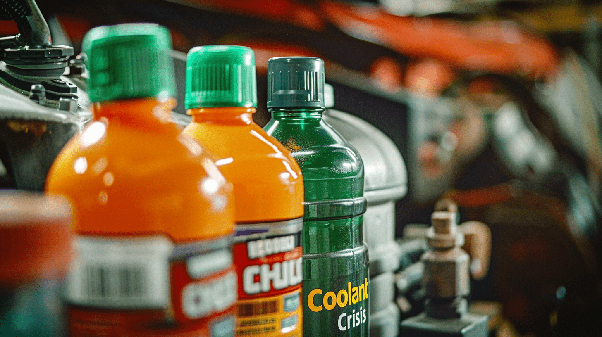Ever popped the hood and found a mysterious colored liquid in your coolant reservoir and wonder why does antifreeze come in many different colors? It wasn’t just for aesthetics!
Historically, coolant colors indicated different types, but nowadays, it’s less about the rainbow and more about what’s best for your car.
Confused about which coolant to top up with? Worry not! We’ll break down the difference between the common coolant colors.
Contents
Why Does Antifreeze Come In Many Different Colors?
The vibrant hues of coolant (also known as antifreeze) might seem like a colorful touch under the hood, but the truth is, the colors have a practical purpose – or at least, they used to.
Here are the reasons behind the various colors and why relying solely on color for choosing coolant can be misleading.
A historical advantage
In the past, coolant colors did indeed serve a valuable function: they helped differentiate between different coolant formulations. This offered a quick visual cue for manufacturers on production lines and repair shops to identify the correct coolant type for a specific vehicle.
Lack of universal standards
However, there’s a catch. Unlike a traffic light, there’s no universal color code for coolant across different car manufacturers. The same coolant specification (meaning the chemical makeup) from different brands can come in entirely different colors!
For example, both Ford and Mercedes use a yellow/gold coolant for their GO5 standard specification, while Chrysler uses orange for the same spec.
Same color, different chemistry
The plot thickens! Even within the same color, the chemical formulations can be vastly different. Chrysler’s orange GO5 coolant and Dex-Cool orange coolant (used in some General Motors vehicles) are a prime example.
While they share the same color, Dex-Cool contains 2-EHA, a plasticizer that can damage gaskets and hoses in vehicles not designed for it. So, relying solely on color for compatibility can lead to serious engine trouble.
The story doesn’t end there. Toyota’s pink Super Long Life coolant uses a Phosphate Organic Acid Technology (POAT) formulation, VW’s pink G-12 coolant uses a Silicate Organic Acid Technology (SiOAT) formulation.
Here’s the kicker: Toyota specifically prohibits the use of silicates in their coolant, while VW avoids phosphates. Despite the identical color, these coolants are absolutely not interchangeable.

A Color-Agnostic Choice of Car Coolant
So, what’s a car owner to do? If you’re looking for a universally compatible coolant option, consider a Nitrite/Nitrate, Amine, Phosphate, and Silicate (NAPS) free formula that also avoids 2-EHA.
This type of coolant, often marketed as “Universal,” “Global,” or “All Makes and Models,” is typically yellow and designed to work in most vehicles (excluding some recently overhauled classics) without affecting warranties.
Let CFJ give you a summary table that outlines the differences between typical car coolant colors for your reference!
| Coolant Color | Base Chemical Composition | Intended Use | Typical Vehicle Applications |
| Green | Ethylene Glycol | Traditional Inorganic Additive Technology (IAT) | Older vehicles (pre-2000), light-duty applications |
| Orange | Organic Acid Technology (OAT) | Long-life coolant, up to 5 years or 150,000 miles | GM vehicles, some newer Ford and Chrysler vehicles |
| Yellow | Hybrid Organic Acid Technology (HOAT) | Combines IAT and OAT properties, longer life | Ford, Chrysler, European manufacturers (Mercedes, BMW, Volvo) |
| Blue | Hybrid Organic Acid Technology (HOAT) | Silicate-free, extended protection | Asian manufacturers (Honda, Nissan, Subaru, Hyundai) |
| Pink | Phosphate Organic Acid Technology (P-OAT) | Extended life, silicate-free | Some European manufacturers (Volkswagen, Audi) |
| Red | Phosphate Organic Acid Technology (P-OAT) | Extended life, high temperature stability | Toyota, Lexus, other Asian manufacturers |
| Purple | Hybrid Organic Acid Technology (HOAT) | Longer-lasting protection | Some European and Asian manufacturers |
| Gold | Hybrid Organic Acid Technology (HOAT) | Long-life, suitable for heavy-duty applications | Some Ford and European manufacturers |
Beside the basic differences above, there are some notices you should keep in mind about these coolant variants.
- Ethylene Glycol: The most common base for engine coolants, providing excellent freeze and boil-over protection.
- IAT (Inorganic Additive Technology): Traditional technology using silicates and phosphates for corrosion protection.
- OAT (Organic Acid Technology): Uses organic acids for corrosion protection, typically has a longer lifespan than IAT.
- HOAT (Hybrid Organic Acid Technology): Combines properties of IAT and OAT for enhanced protection and longevity.
- P-OAT (Phosphate Organic Acid Technology): Uses phosphates and organic acids, suitable for high-temperature stability and long life.
FAQs
-
How does the color of antifreeze impact its chemical composition?
The color of antifreeze often corresponds to its chemical composition and the specific type of additives used.
For example, green antifreeze typically contains inorganic additives like silicates and phosphates, while orange antifreeze often contains organic acid technology (OAT) additives.
-
Can mixing different colors of antifreeze cause engine damage?
Mixing different colors of antifreeze can cause chemical reactions that lead to the formation of sludge or gel-like substances, which can clog cooling system passages, reduce heat transfer efficiency, and potentially cause overheating and engine damage.
-
Are there any regional differences in antifreeze colors?
Antifreeze colors can vary by region due to differences in climate and manufacturer preferences.
For example, European car manufacturers might use different colors compared to American or Asian manufacturers based on the specific requirements of their cooling systems and the environmental conditions.
-
Do different antifreeze colors have different lifespans?
The lifespan of antifreeze can vary depending on its color and chemical formulation. For instance, some long-life antifreezes, often orange or red, can last up to 5 years or 150,000 miles, while traditional green antifreeze might need to be replaced every 2-3 years or 30,000 miles.
-
Is there a universal antifreeze color that can be used in any vehicle?
While there are some “universal” antifreeze products on the market designed to be compatible with multiple vehicle types, it’s still important to verify compatibility with your specific vehicle.
-
What role do antifreeze colors play in environmental safety?
Some antifreeze colors are formulated with specific additives that can be more environmentally friendly, such as propylene glycol-based antifreeze that are less toxic than ethylene glycol-based antifreeze.
The color can help identify these formulations and ensure proper handling and disposal.
-
Can the color of antifreeze change over time?
Antifreeze can change color over time due to contamination, degradation of additives, or mixing with other fluids. If you notice a significant color change in your antifreeze, it’s advisable to have your cooling system inspected to ensure there are no underlying issues.
-
Do antifreeze colors affect the freezing and boiling points of the coolant?
The color itself does not affect the freezing and boiling points of the antifreeze, but the additives and chemical composition associated with different colors can influence these properties.
Check out this video from Danny Johnson’s Garage to why coolant has different colors and why you can’t mix them!
The Final Words
So why does antifreeze come in many different colors? Remember, the color of your coolant is just one piece of the puzzle. The most crucial step is always to refer to your car’s owner’s manual for the recommended coolant type.
The manual will specify the appropriate coolant formulation based on your vehicle’s specific needs, ensuring optimal cooling performance and preventing potential damage.



